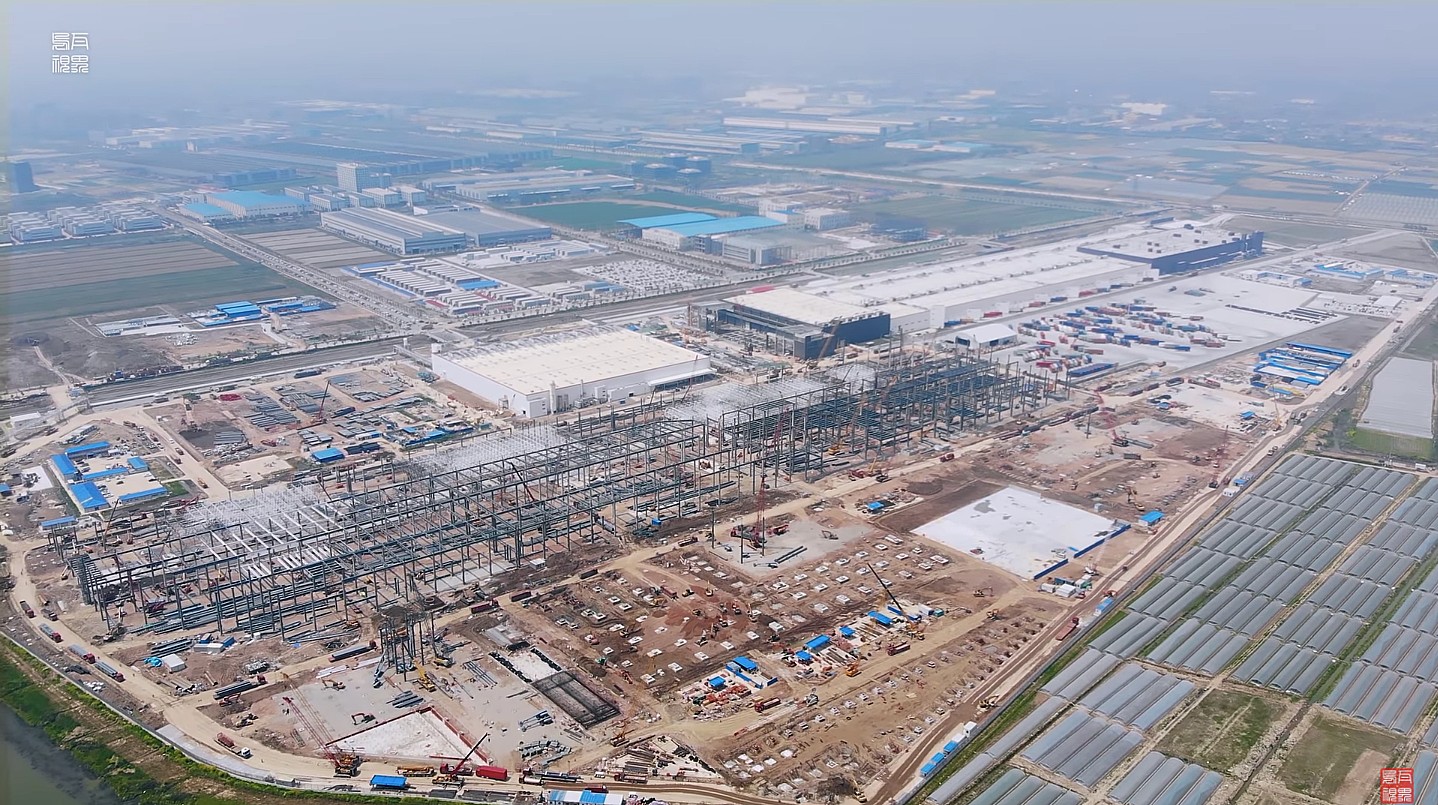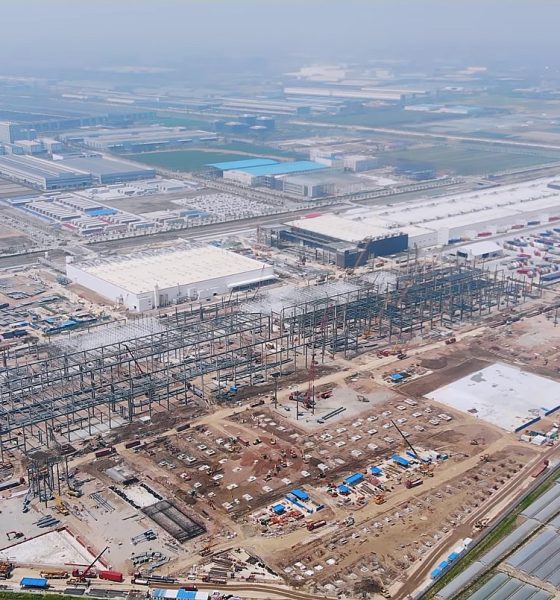

News
Tesla locks in world’s largest cobalt supplier Glencore for Gigafactory Shanghai, Berlin
Tesla has secured a deal to purchase 12 million pounds of cobalt annually from Glencore, a Swiss-based company that is recognized as the world’s largest miner of the metal. The partnership will keep Tesla away from a possible supply squeeze of cobalt as more automakers aim to break into the EV sector in the future.
The deal will supply both Giga Shanghai and Giga Berlin with enough of the metal to avoid a shortage in the future. With the electric vehicle sector continuing to grow, and demand for Tesla vehicles expanding in both Europe and Asia, the company has struck a deal that will alleviate any supply shortage concerns in the coming years.
The terms of the deal are unknown, and neither company responded to inquiries from Bloomberg, which first reported the partnership between the electric car maker and the cobalt supplier.
In both China and Europe, popular automakers like Volkswagen, BMW, and BYD are preparing for a future with electric transportation. In 2017 and 2018, a shortage in cobalt caused prices to spike, which seems to have given Tesla CEO Elon Musk the indication that his company must begin developing a battery that was less reliant on the metal. While Tesla continues to work on battery cells that are free of cobalt, the deal with Glencore ensures that the electric car maker will not be in short supply in the foreseeable future.
Tesla had been discussing the terms of a deal with Glencore since mid-January. However, Glencore’s automotive supply chain goes past the Silicon Valley-based automaker. The company signed an agreement with BMW in April 2019, and also with Korean battery manufacturer SK Innovation in December 2019.
Tesla is looking to ramp up production outside of the United States as demand continues to increase across the globe. With the company planning to begin a steady push of the Model Y in Europe and Asia in 2021, Tesla’s battery supply chain must be efficient and dependable to ensure a steady flow of reliable electric vehicles.
Giga Shanghai is currently producing vehicles at a run-rate of 200,000 a year, with production expected to increase when Tesla completes phase 2A of the facility. The completion of the second phase in China will introduce the Model Y to the largest automotive market in the world.
Meanwhile, Giga Berlin is still roughly a year away from its initial production push, which will begin with the Model Y. However, Tesla anticipates an annual production rate of 500,000 electric cars per year.
Tesla recently expanded on its use of cobalt within its battery cells in the 2019 Impact Report. The company currently utilizes “nickel-rich cathode materials” in its cells, which contain less cobalt concentration than cathode chemistries that other companies use in their batteries.
The company also expanded on its practices of using cobalt, which is controversial on its own due to its mining practices in the Democratic Republic of Congo. Glencore owns a mine in the DRC, but it is currently closed for maintenance. Tesla’s suppliers are required to follow the company’s “Supplier Code of Conduct” and its “Human Rights and Conflict Minerals Policy.” Each of Tesla’s suppliers is subjected to an annual third-party to ensure safe and humane mining practices.
Tesla’s deal with Glencore will ensure safe and humane cobalt mining, but it will also ensure the company’s long-term success as production and demand for continue to rise. The electric automaker will undoubtedly let go of any concern that may have to do with supply shortages while the industry continues to grow amid more competition entering the sector.

News
Tesla FSD fleet is nearing 7 billion total miles, including 2.5 billion city miles
As can be seen on Tesla’s official FSD webpage, vehicles equipped with the system have now navigated over 6.99 billion miles.

Tesla’s Full Self-Driving (Supervised) fleet is closing in on almost 7 billion total miles driven, as per data posted by the company on its official FSD webpage.
These figures hint at the massive scale of data fueling Tesla’s rapid FSD improvements, which have been quite notable as of late.
FSD mileage milestones
As can be seen on Tesla’s official FSD webpage, vehicles equipped with the system have now navigated over 6.99 billion miles. Tesla owner and avid FSD tester Whole Mars Catalog also shared a screenshot indicating that from the nearly 7 billion miles traveled by the FSD fleet, more than 2.5 billion miles were driven inside cities.
City miles are particularly valuable for complex urban scenarios like unprotected turns, pedestrian interactions, and traffic lights. This is also the difference-maker for FSD, as only complex solutions, such as Waymo’s self-driving taxis, operate similarly on inner-city streets. And even then, incidents such as the San Francisco blackouts have proven challenging for sensor-rich vehicles like Waymos.
Tesla’s data edge
Tesla has a number of advantages in the autonomous vehicle sector, one of which is the size of its fleet and the number of vehicles training FSD on real-world roads. Tesla’s nearly 7 billion FSD miles then allow the company to roll out updates that make its vehicles behave like they are being driven by experienced drivers, even if they are operating on their own.
So notable are Tesla’s improvements to FSD that NVIDIA Director of Robotics Jim Fan, after experiencing FSD v14, noted that the system is the first AI that passes what he described as a “Physical Turing Test.”
“Despite knowing exactly how robot learning works, I still find it magical watching the steering wheel turn by itself. First it feels surreal, next it becomes routine. Then, like the smartphone, taking it away actively hurts. This is how humanity gets rewired and glued to god-like technologies,” Fan wrote in a post on X.
News
Tesla starts showing how FSD will change lives in Europe
Local officials tested the system on narrow country roads and were impressed by FSD’s smooth, human-like driving, with some calling the service a game-changer for everyday life in areas that are far from urban centers.

Tesla has launched Europe’s first public shuttle service using Full Self-Driving (Supervised) in the rural Eifelkreis Bitburg-Prüm region of Germany, demonstrating how the technology can restore independence and mobility for people who struggle with limited transport options.
Local officials tested the system on narrow country roads and were impressed by FSD’s smooth, human-like driving, with some calling the service a game-changer for everyday life in areas that are far from urban centers.
Officials see real impact on rural residents
Arzfeld Mayor Johannes Kuhl and District Administrator Andreas Kruppert personally tested the Tesla shuttle service. This allowed them to see just how well FSD navigated winding lanes and rural roads confidently. Kruppert said, “Autonomous driving sounds like science fiction to many, but we simply see here that it works totally well in rural regions too.” Kuhl, for his part, also noted that FSD “feels like a very experienced driver.”
The pilot complements the area’s “Citizen Bus” program, which provides on-demand rides for elderly residents who can no longer drive themselves. Tesla Europe shared a video of a demonstration of the service, highlighting how FSD gives people their freedom back, even in places where public transport is not as prevalent.
What the Ministry for Economic Affairs and Transport says
Rhineland-Palatinate’s Minister Daniela Schmitt supported the project, praising the collaboration that made this “first of its kind in Europe” possible. As per the ministry, the rural rollout for the service shows FSD’s potential beyond major cities, and it delivers tangible benefits like grocery runs, doctor visits, and social connections for isolated residents.
“Reliable and flexible mobility is especially vital in rural areas. With the launch of a shuttle service using self-driving vehicles (FSD supervised) by Tesla in the Eifelkreis Bitburg-Prüm, an innovative pilot project is now getting underway that complements local community bus services. It is the first project of its kind in Europe.
“The result is a real gain for rural mobility: greater accessibility, more flexibility and tangible benefits for everyday life. A strong signal for innovation, cooperation and future-oriented mobility beyond urban centers,” the ministry wrote in a LinkedIn post.
News
Tesla China quietly posts Robotaxi-related job listing
Tesla China is currently seeking a Low Voltage Electrical Engineer to work on circuit board design for the company’s autonomous vehicles.

Tesla has posted a new job listing in Shanghai explicitly tied to its Robotaxi program, fueling speculation that the company is preparing to launch its dedicated autonomous ride-hailing service in China.
As noted in the listing, Tesla China is currently seeking a Low Voltage Electrical Engineer to work on circuit board design for the company’s autonomous vehicles.
Robotaxi-specific role
The listing, which was shared on social media platform X by industry watcher @tslaming, suggested that Tesla China is looking to fill the role urgently. The job listing itself specifically mentions that the person hired for the role will be working on the Low Voltage Hardware team, which would design the circuit boards that would serve as the nervous system of the Robotaxi.
Key tasks for the role, as indicated in the job listing, include collaboration with PCB layout, firmware, mechanical, program management, and validation teams, among other responsibilities. The role is based in Shanghai.
China Robotaxi launch
China represents a massive potential market for robotaxis, with its dense urban centers and supportive policies in select cities. Tesla has limited permission to roll out FSD in the country, though despite this, its vehicles have been hailed as among the best in the market when it comes to autonomous features. So far, at least, it appears that China supports Tesla’s FSD and Robotaxi rollout.
This was hinted at in November, when Tesla brought the Cybercab to the 8th China International Import Expo (CIIE) in Shanghai, marking the first time that the autonomous two-seater was brought to the Asia-Pacific region. The vehicle, despite not having a release date in China, received a significant amount of interest among the event’s attendees.








